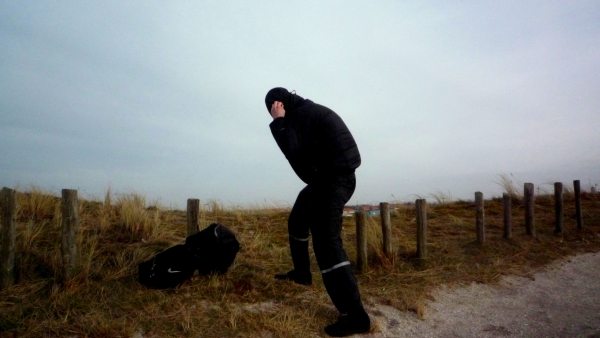Spring Exhibition 2011
No One Belongs Here, Kunsthalle, Budapest, March 26th – April 23rd, 2011
Curators: Petra Csizek, Gábor Döme
Text: Tibor Tardos
Photos: Kunsthalle

Besorolás alatt: A tegnapért alszom ma, paralel videó és hanginstalláció, 2011
What is (good) contemporaray art like? It is up-to-date, innovative, provoking and intellectual in . Pushes the limits of styles and genres further on. Treats its audience as a partner, and is not reluctant to entertain people. And what does it take to make a good art gallery? To flood its old rooms and artistic public life prone to getting stuffy with fresh air. This spring all this came true. The Art Gallery (Kunsthalle Budapest) devoted itself to its primary mission: breaking off irons, advertising liberty and freedom, creating communities. Not only those of authors (creators and makers): us, visitors also had the chance now to participate in their efforts fed by absorbed devotion. Instead of objects d’art our Kusthalle in spring was occupied by artistic cooperations (groups of young non-visual artists) for a whole month. Their programmes were listed on the homepage of the exhibition on pages of small letters (sized four and a half points) in the screen. Not to mention blogspots. As collective creation in groups inevitably evokes the danger of alienation and being treated by outsiders (because the ideal medium of creation and reception should be the deepest kind of individuality anyway), the reserved and cool word projekt has become widespread: this is the term these groups favour to use when referring to their actions, whether their products or results are object-like works or not. The Corporation: Lordship (a word coined on the analogy of and thus referring to ’spaceship’ in Hungarian – translator) – a company of transcendental seekers of the way have used the Kunsthalle as a paraphrase of a church. Their sacred-mocking objects, video-installations were found all over the building, in every room including the lounge: a lumbering collection of alms-box purses, a rocket-pulpit, an untied Gordian knot, virtual aspersoria (fonts), nylon confessionals and their likes. The workshop of artists called KIBU (short for Kitchen Budapest) is a world-improving enterprise/foundation/green centre. With its modestly friendly communal kitchen with pieces of resting furniture made from recycled building joiners’ waste and herbs planted in boxes it attracted ladies and gentlemen into its imposing banquet hall. LaciésBalázs decided to reveal works of art hiding beneath the painting on both lateral walls of the apse with the meticulousness typical of instaurators. Trained in photodocumentation and the provocation of communal events, Tehnica Schweiz and Katarina Šević furnished a tableau vivant stage in the apse where on Friday evenings they personify The Heroes of the Driftway with their friends tainted with real coal-dust (eve if it is made of wood): they act as a team of miners stuck in the depths of the Earth.



